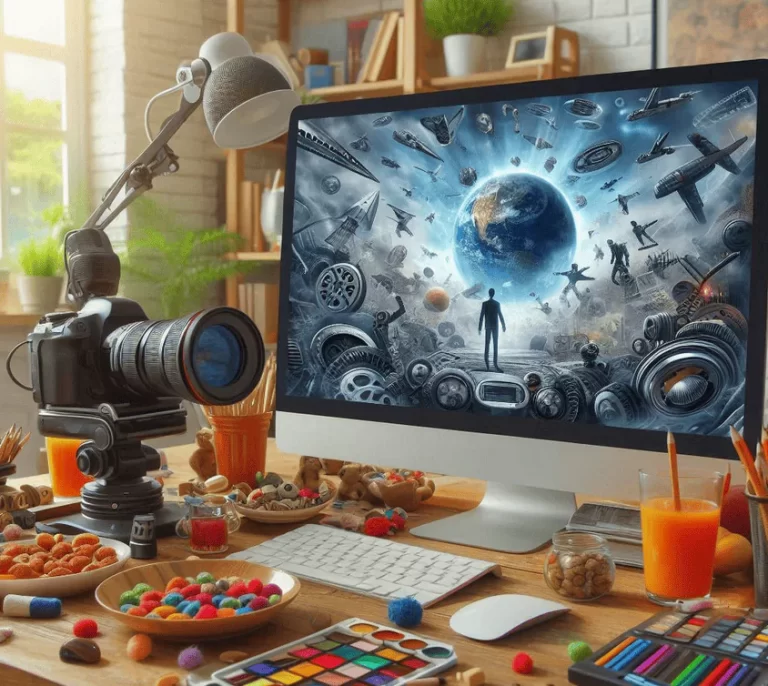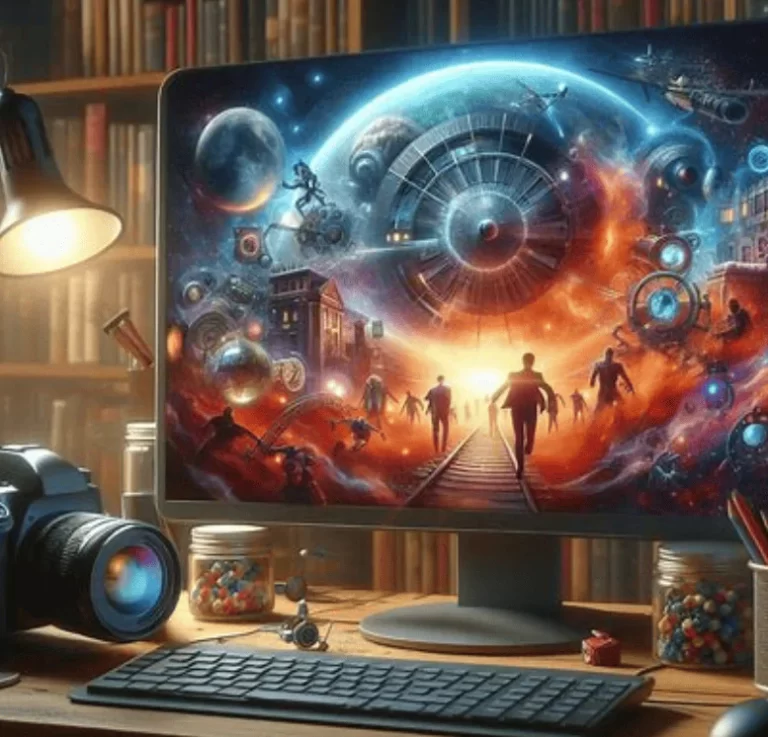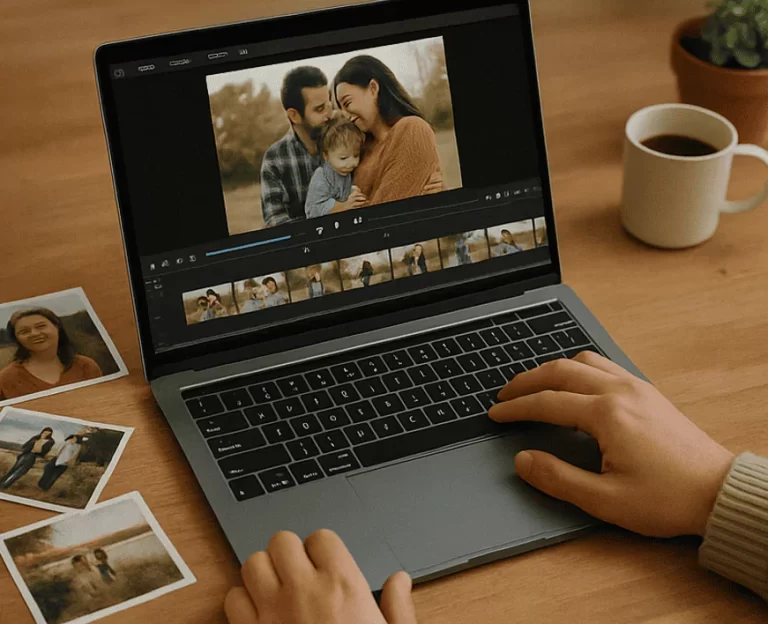
Digital Renaissance In the ever-evolving landscape of human creativity, the Digital Renaissance emerges as a transformative era, redefining how art is conceptualized, created, and shared. This epoch, fueled by technology and boundless innovation, parallels the historical Renaissance in its profound impact on culture, society, and self-expression. Unlike its historical predecessor, however, this revolution unfolds in the digital realm, breaking free from the constraints of physical mediums and geographical boundaries.
The Foundations of the Digital Renaissance
The term Digital Renaissance encapsulates a resurgence of creative energy brought forth by the proliferation of digital tools. Where the original Renaissance was defined by a rediscovery of classical techniques and knowledge, its digital counterpart thrives on the fusion of technology with imagination. Artists are no longer confined to paintbrushes or chisels. Instead, they wield software, virtual reality, and artificial intelligence to create works that transcend the tangible.
This movement is rooted in accessibility. The rise of affordable devices, open-source software, and global platforms has democratized art like never before. Artists from diverse backgrounds can contribute to the collective canvas of the Digital Renaissance, enriching it with perspectives shaped by their unique experiences.
Hallmarks of the Digital Renaissance
At its core, the Digital Renaissance is characterized by three defining elements: innovation, interactivity, and inclusivity.
1. Innovation
Innovation is the lifeblood of this era. Traditional art forms, while still celebrated, are being reimagined through technology. Painting evolves into digital illustration, sculpture takes form in 3D printing, and performance art finds new dimensions in augmented reality. The convergence of art and technology opens avenues that were previously unimaginable.
Artificial intelligence plays a pivotal role in this innovation. AI-generated art, once dismissed as a novelty, has become a legitimate medium. Algorithms like GANs (Generative Adversarial Networks) allow machines to create stunning visual pieces, sometimes indistinguishable from those crafted by human hands. While some debate the merit of such creations, there is no denying their role in pushing artistic boundaries.
2. Interactivity
Unlike traditional art, which is often static and observational, the Digital Renaissance embraces interactivity. Virtual reality installations invite viewers to step inside the artwork, exploring immersive environments that react to their movements. Video games, long dismissed as mere entertainment, are now celebrated for their narrative depth and visual artistry, blending storytelling with engagement.
This interactivity fosters a deeper connection between the creator and the audience. Art becomes a conversation, a dynamic exchange where the viewer’s experience is shaped by their choices and interpretations.
3. Inclusivity
Perhaps the most profound aspect of the Digital Renaissance is its inclusivity. Social media platforms, online marketplaces, and virtual galleries have made it possible for artists to reach global audiences without intermediaries. Marginalized voices, often excluded from traditional art circles, find a platform to express themselves authentically.
Moreover, collaborations across continents have become commonplace. Artists from vastly different cultural backgrounds can now co-create, blending their traditions and perspectives into unified masterpieces. This global exchange enriches the collective artistic narrative, fostering a sense of unity amidst diversity.
The Role of Technology in the Digital Renaissance
The Digital Renaissance owes its existence to technological advancements. Each innovation, whether in hardware or software, serves as a brushstroke in this expansive digital canvas.
Software Revolution
Software like Adobe Creative Suite, Procreate, and Blender has become the backbone of modern artistry. These tools offer precision, flexibility, and limitless possibilities. Where traditional art demanded physical resources and space, digital tools require only a device and imagination.
Additionally, platforms like Unity and Unreal Engine empower artists to venture into realms of 3D modeling, animation, and virtual reality. These technologies, originally developed for video games, are now integral to artistic experimentation.
Blockchain and NFTs
The advent of blockchain technology has further propelled the Digital Renaissance. Non-fungible tokens (NFTs) provide a way for digital artists to establish ownership and authenticity in an otherwise replicable medium. This innovation has not only created new revenue streams but has also elevated digital art to the same level of prestige as traditional works.
However, NFTs are not without controversy. Critics point to their environmental impact and speculative nature, sparking debates about sustainability and ethics within the art community.
Virtual and Augmented Reality
Virtual reality (VR) and augmented reality (AR) have redefined what it means to experience art. VR allows artists to create immersive worlds, transporting audiences into surreal landscapes. AR, on the other hand, overlays digital elements onto the physical world, blurring the boundaries between reality and imagination.
The Societal Impact of the Digital Renaissance
Art, in any form, reflects and influences society. The Digital Renaissance is no exception. It shapes how we communicate, perceive beauty, and address societal issues.
Redefining Communication
In the age of memes, GIFs, and digital illustrations, art has become a universal language. Complex ideas and emotions are distilled into visuals that transcend linguistic barriers. This shift has made art more accessible, fostering cross-cultural understanding and dialogue.
Addressing Global Issues
The Digital Renaissance is a powerful tool for activism. Climate change, social justice, and mental health are just a few of the themes explored by digital artists. Through visually compelling narratives, they inspire action and raise awareness about pressing issues.
For example, interactive installations on climate change immerse audiences in the realities of rising sea levels and deforestation, evoking empathy and urgency. Similarly, digital portraits celebrating diversity challenge stereotypes and promote inclusivity.
Challenges and Controversies
While the Digital Renaissance is celebrated for its innovation, it is not without its challenges. Issues of authenticity, accessibility, and commercialism persist, raising questions about the future of this movement.
Authenticity and Ownership
The replicable nature of digital art complicates issues of authenticity and intellectual property. How does one prove ownership of a piece that exists in countless copies? While blockchain technology offers solutions, it is not foolproof.
Accessibility vs. Exclusivity
Despite its democratizing potential, the Digital Renaissance still grapples with issues of accessibility. High-quality tools and devices often come with hefty price tags, excluding those from less privileged backgrounds. Bridging this gap requires systemic changes, including affordable technology and educational initiatives.
The Commercialization of Art
As with any artistic movement, the Digital Renaissance faces the risk of over-commercialization. The meteoric rise of NFTs, for instance, has led to concerns about art being reduced to speculative assets rather than cultural expressions. Striking a balance between profitability and authenticity remains a challenge.
The Future of the Digital Renaissance
The Digital Renaissance is far from over. As technology continues to evolve, so too will the ways in which we create and experience art. Emerging trends hint at a future where the line between the digital and the physical blurs even further.
Bio-Art and Generative Design
Artists are beginning to explore bio-art, using living organisms as a medium. When combined with digital technology, this field offers unprecedented possibilities. Generative design, powered by algorithms, is another frontier, enabling the creation of intricate patterns and forms that would be impossible to achieve manually.
The Metaverse as a Canvas
The concept of the metaverse—a fully immersive digital universe—offers endless opportunities for artistic expression. In this space, artists can create entire worlds, unbound by the laws of physics or the limitations of traditional mediums.
Conclusion
The Digital Renaissance is a testament to humanity’s unyielding desire to innovate and express. It bridges the past and the future, blending age-old principles of artistry with cutting-edge technology. As this movement continues to evolve, it challenges us to rethink what art can be and how it can shape the world around us.
In this era of boundless creativity, the only limits are those of our imagination. The Digital Renaissance is not merely a chapter in the history of art—it is a celebration of human ingenuity and the infinite possibilities of the digital age.



